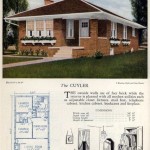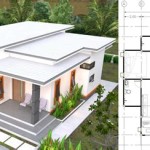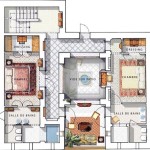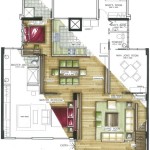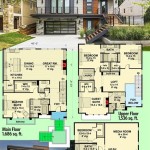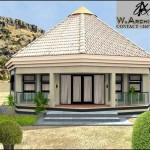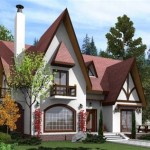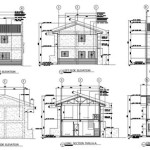Colorado Mountain Style House Plans: A Comprehensive Guide
Colorado Mountain Style house plans evoke images of rugged landscapes, snow-capped peaks, and cozy interiors. They are characterized by a harmonious blend of natural materials, functional design, and a deep connection to the surrounding environment. This architectural style is not merely a trend; it’s a response to the unique challenges and opportunities presented by the mountainous terrain and climate of the Rocky Mountain region. Understanding the core elements of these plans is crucial for anyone considering building or renovating a home in this style.
These house plans prioritize integration with the natural environment. Large windows offer panoramic views, and outdoor living spaces, such as decks and patios, extend the living area into the landscape. The use of natural materials like timber, stone, and stucco further reinforces the connection to the outdoors. Sustainability is often a key consideration, with designs incorporating energy-efficient features and materials to minimize environmental impact. This architectural approach aims to create homes that are both aesthetically pleasing and functionally suited to the demands of mountain living.
The popularity of Colorado Mountain Style house plans extends beyond the state's borders. Their timeless appeal and adaptability to different climates have made them a sought-after choice for homeowners in other mountainous regions and even in areas with milder climates. The emphasis on natural light, open floor plans, and comfortable living spaces resonates with many who desire a home that feels both spacious and inviting.
Key Elements of Colorado Mountain Style Architecture
Several defining characteristics distinguish Colorado Mountain Style house plans from other architectural styles. These elements work together to create homes that are not only visually appealing but also practical and durable in the challenging mountain environment.
Firstly, material selection plays a crucial role. Natural materials such as wood and stone are prominently featured, both on the exterior and interior. Wood siding, often cedar or pine, provides a warm and rustic aesthetic, while stone accents add texture and visual interest. These materials are not only aesthetically pleasing but also contribute to the durability and longevity of the structure, with many choices weathering the elements effectively. Large timbers are often used for structural support, adding to the sense of solidity and permanence. Stone fireplaces are a common feature, providing a focal point in the living room and contributing to the overall feeling of warmth and comfort.
Secondly, rooflines are often complex and varied, mirroring the rugged topography of the surrounding mountains. Gabled roofs are common, often with multiple peaks and valleys. This not only adds visual interest but also helps to shed snow efficiently. Deep eaves provide protection from the elements, shielding walls and windows from rain and snow. Metal roofing is a popular choice due to its durability and ability to withstand heavy snow loads. These intricate roof designs are a hallmark of the style, adding to the overall sense of architectural complexity and visual appeal.
Thirdly, the integration of outdoor living spaces is paramount. Decks, patios, and porches extend the living area into the natural environment, providing opportunities to enjoy the stunning mountain views and fresh air. These outdoor spaces are often designed to be sheltered from the elements, allowing for year-round use. Fire pits and outdoor kitchens are common additions, creating inviting spaces for entertaining and relaxation. The seamless transition between indoor and outdoor spaces is a key characteristic of Colorado Mountain Style architecture, allowing homeowners to fully appreciate the beauty and tranquility of their surroundings.
Interior Design Considerations
The interior design of a Colorado Mountain Style home should complement the exterior architecture, creating a cohesive and harmonious living environment. The use of natural materials, warm colors, and comfortable furnishings is essential to achieving the desired aesthetic.
Open floor plans are common, creating a sense of spaciousness and allowing for easy flow between living areas. This is particularly important in mountain homes, where maximizing natural light and views is a priority. Large windows and skylights are used to flood the interior with light, creating a bright and inviting atmosphere. High ceilings further enhance the feeling of spaciousness, allowing for the incorporation of dramatic architectural details such as exposed beams and timber framing.
Color palettes typically draw inspiration from the natural environment, with earthy tones such as browns, greens, and grays predominating. These colors create a sense of warmth and tranquility, while also reflecting the colors of the surrounding landscape. Accent colors, such as reds, oranges, and yellows, can be used sparingly to add pops of color and visual interest. Natural stone and wood are also incorporated into the interior design, adding texture and visual warmth. Stone fireplaces, wood floors, and exposed timber beams are all common features in Colorado Mountain Style interiors.
Furnishings should be comfortable and inviting, with an emphasis on natural materials and textures. Leather sofas, wool rugs, and linen curtains are all popular choices. Rustic furniture, such as reclaimed wood tables and chairs, adds character and charm. Accessories should be carefully chosen to complement the overall aesthetic, with items such as antler chandeliers, woven baskets, and pottery adding a touch of rustic elegance. The goal is to create a space that feels both comfortable and stylish, reflecting the natural beauty of the surrounding mountains.
Adapting Colorado Mountain Style to Different Climates and Locations
While Colorado Mountain Style house plans are ideally suited to the climate and terrain of the Rocky Mountains, they can be adapted to different climates and locations with careful planning and design considerations. The key is to focus on the core principles of the style—natural materials, functional design, and a connection to the environment—and adapt them to the specific challenges and opportunities of the location.
In warmer climates, it is important to focus on ventilation and shading to keep the home cool and comfortable. Large windows can be oriented to take advantage of natural breezes, and deep eaves can provide shade from the sun. Light-colored materials can be used to reflect sunlight and reduce heat gain. Outdoor living spaces can be designed to be shaded and protected from the sun, with features such as pergolas and awnings. The use of drought-tolerant landscaping can also help to conserve water and reduce the need for irrigation.
In colder climates, it is important to focus on insulation and energy efficiency to keep the home warm and reduce heating costs. High-performance windows and doors can help to minimize heat loss, and well-insulated walls and roofs can further reduce energy consumption. Passive solar design can be used to capture the sun's energy and warm the home naturally. Radiant floor heating is a popular choice for mountain homes, as it provides even and comfortable warmth throughout the house. Snow melting systems can be installed on driveways and walkways to prevent ice buildup and improve safety.
When adapting Colorado Mountain Style to different locations, it is important to consider the local building codes and regulations. Some areas may have restrictions on the use of certain materials or design features. It is also important to consider the availability of local materials and labor. Working with a qualified architect and contractor who are familiar with the local building practices and regulations can help to ensure that the project is completed successfully. Regardless of the location, the principles of sustainable design should be prioritized, with a focus on minimizing environmental impact and creating a home that is both beautiful and functional.

Plan 43326 5 Bedroom Mountain Style House

Plan 43301 Multi Gabled Mountain Lodge Style Home Plans

Craftsman Mountain House Plan With Four Master Suites And Baths 9069

Why Building A Mountain House Plan Is Great For Your Family Dfd Plans Blog

Lodge Style Family Mountain Compound Mark Stewart House Plan

Plan 43328 Compact Craftsman Lodge With Two Stories

A Warm Yet Contemporary Mountain Feel In Colorado Home

Endless Summer Mountain Living

Rustic Ranch House In Colorado Opens To The Mountains Mountain Homes Plans Landscaping

Plan 23472jd Mountain Craftsman Home House Plans

